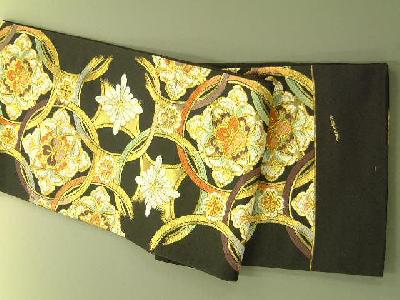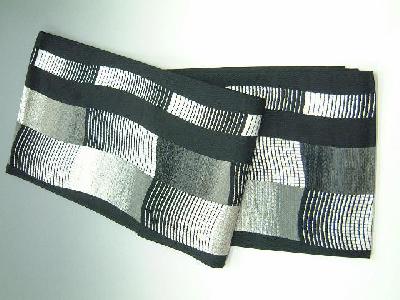西陣織 Nisijinori Nishijin Weaving
|
Weaving industry in Kyoto suffered a catastrophic damage by the Onin War (1467). However, when the conflict ended, the weavers returned to Kyoto and resumed their craft of weaving on the site where the western forces had camped during the war. Since then this craft has been called “Nishijin,” which means “the west position.” During the Edo period, takahata (raised loom) was imported from China, which made mon-ori (brocade) using Sakizome yarn (yarn dyed in advance) possible and the Nishijin area became the major textile producing center. In the Meiji period, observers went to France and other European countries to study the textile techniques such as jacquard weaving and succeeded in modernizing the industry, which made the Nishijin Weaving the highest-grade textile of the country. In Nishijin weaving, yarns of various colors are woven to make gorgeous and elaborate patterns. At the present not only traditional obi belts and kimono fabrics but also fabrics used for neckties and kimono accessories are made. Some are even used for interior decoration. Innovative products with modern design are manufactured as well. Up to now, 12 of the techniques are designated as Traditional Craft Products.
- address
- Imadegawaminamihairu, Horikawadori, Kamigyou-ku, Kyoto, Kyoto Prefecture, 602-8216
- name
- Nishijin Weaving Industry Association
- phone
- 075-432-6131
- info@nishijin.jp
- hp
- http://www.nishijin.or.jp/














